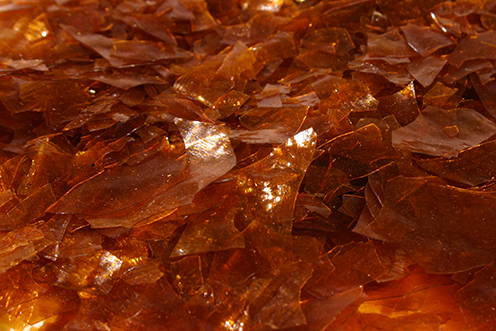Shellac, a common high gloss furniture varnish, is actually a natural resin excreted from female lac beetles. The insects ingest tree sap then secrete shellac onto twigs and branches to form a shell-like coating to protect their eggs. The raw shellac is harvested and filtered to remove impurities then heated to its melting point. This purified liquid resin is spread out to dry as a thin sheet which is then broken up and sold as shellac flakes. Finally, the flakes are dissolved in alcohol to create the liquid finish that is applied to furniture. Once dry, the finished coating is durable and waterproof, but remains alcohol soluble. This makes touchup and repair easier than other finishes but care must be taken to avoid alcohol-based cleaners and any spills from alcoholic beverages. Shellac is also used as a glossy non-stick coating for candy (often referred to as “confectioner’s glaze” in the ingredients list), pills, and even that waxy film on your apple that makes it nice and shiny. In the past, shellac was used as an electrical insulator and as the base material for phonograph records until vinyl took its place in 1930.
